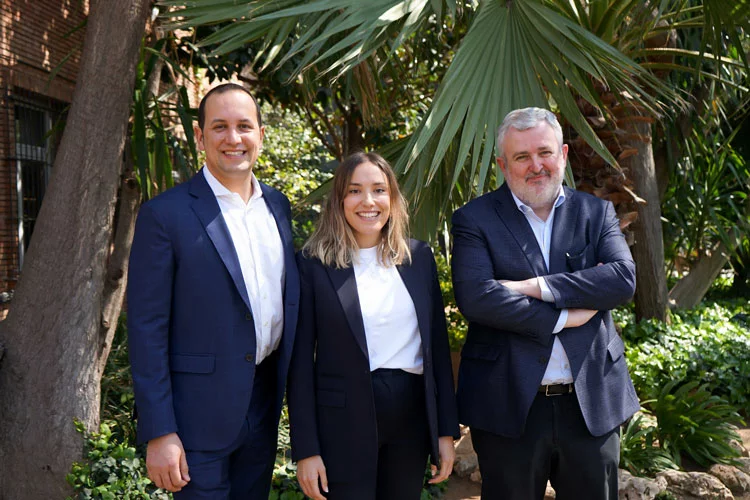In her doctoral thesis conducted at IQS, Dr Noemí Balà has designed a specific device to treat aortic dissection featuring mechanical properties similar to those of the artery, making it possible to improve current treatments.

Dr. Jordi Martorell, Dra. Noemí Balà and Dr. Salvador Borrós
Aortic dissection (AD) is one of the most catastrophic issues that can occur in the aorta. When an aortic dissection occurs, a hole appears in the wall of the artery that causes blood to enter through the wall, separating into layers. Dissection is often fatal if the new channel is broken from the outside. Despite the relatively high incidence of this disease, medical device companies have devoted less attention to aortic dissection than to other cardiovascular diseases. This is why current solutions are not designed to treat dissection, but to treat aortic aneurysms instead. For this reason, further surgical interventions for patients are necessary.
Within this context, Dr Noemí Balà conducted her doctoral thesis “Development of a bioabsorbable patch to treat aortic dissection” with the Department of Chemical Engineering and Materials Science at the IQS School of Engineering. Her doctoral thesis proposes replacing the graft currently used to repair aortic dissections, which is quite long and rather different mechanically from the aorta, with a small device made of a biocompatible material that covers the hole that is produced. This device consists of a patch that adheres to the arterial wall, with a microstructure that facilitates cell integration. The properties of the patch, similar to those of the artery, make it adapt exceptionally well to the artery’s pulsatility, and much better than current treatments. Dr Balà’s thesis was co-supervised by Dr Jordi Martorell, coordinator of the Vascular Engineering and Applied Biomedicine Group (GEVAB) and Dr Salvador Borrós, coordinator of the Materials Engineering Group (GEMAT).
The research was very interdisciplinary as Dr Balà manufactured the patch with polycaprolactone, a bioabsorbable polymer with a long absorption time, and which is also a material that has been approved by the FDA. Using the electrospinning technique, Dr Balà was able to create fibres with very small measurements and different distributions to produce a microstructure with the desired mechanical properties. Thus, it has been possible to create a patch with two fibre layers, one with the aligned fibres and the other with the random fibres, which interact with the two types of cells present in the artery: endothelial cells and smooth muscle cells.
All the parameters have been optimized to bring the system that has been designed to an industrial scale thanks to collaboration with the companies The Electrospinning Company and Bionicia.
In vitro and in vivo tests
After creating the microstructure based on the characteristics of the aorta, the next step was to carry out in vitro tests using different proteins and peptides, verifying that the morphology of the patch helps guide the endothelial cells towards the aligned fibres with positive results in terms of cell migration and proliferation.
Finally, one of the samples tested – the one manufactured at The Electrospinning Company – was chosen to perform the in vivo tests, first with pigs then with lambs. In the tests that were conducted, the patch was implanted by open surgery and was followed by a vascular and trans-oesophageal ultrasound. Long-lasting tests, up to three months in duration, have shown that the patch that has been developed causes very little inflammatory reaction and that it adapts perfectly to the artery on each heartbeat. Moreover, cells have been able to colonize the patches, achieving re-endothelialization and arterial remodelling in all extended trials.
The results clearly open the door to an innovative technology for the treatment of aortic dissection and, once the endovascular delivery system is completed, human trials will begin
This research has produced a family of patents, from which the Aortyx spinoff was created.
IQS and Aortyx have received funding from the “la Caixa” Foundation, EIT Health, FIPSE, the Government of Catalonia/AGAUR, ENISA, and the CDTI in addition to having partnered directly with the Hospital Clínic in Barcelona.















